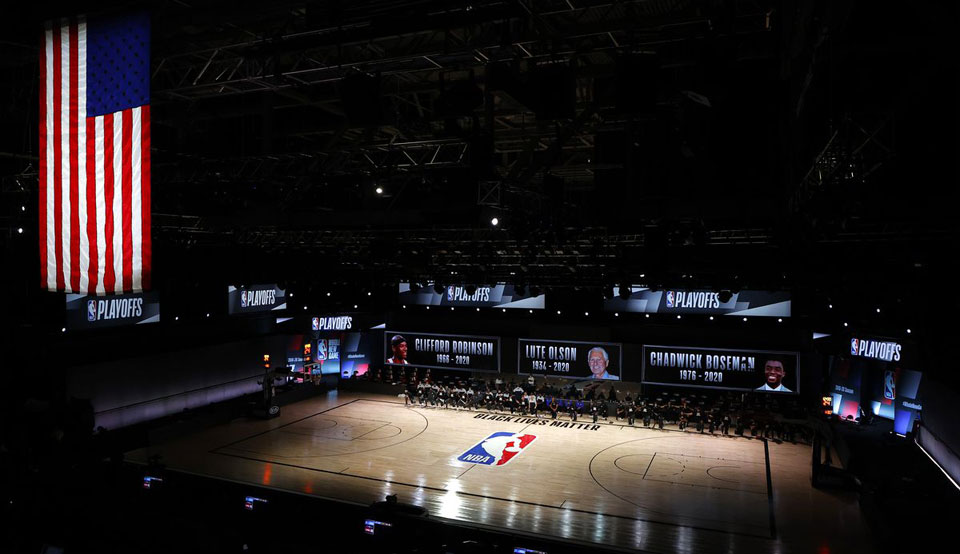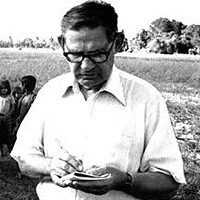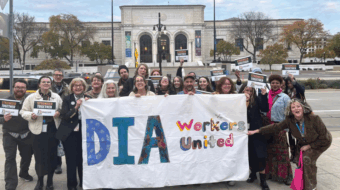
Most often, art imitates life. But there are moments where life imitates art. Where even the most unimaginable or unrealistic social satire is reality, reflecting the ugly truth. Like inverted images formed on camera film negatives, upside down until we choose to flip it right side up, ultimately correcting the incorrect view we held.
Fifty-five years ago, Douglas Turner Ward, a sportswriter for the Daily World, the People’s World’s predecessor publication, penned and debuted a play that forced Americans to see racism stripped bare, and up close. The play’s premise: What would the country look like, and do, if Black Americans up and vanished?
Following the murder after murder of Black Americans by law enforcement, professional basketball players, a majority of which are Black Americans, recreated this premise. They disappeared. A strike for Black Lives left the basketball courts empty. Shockwaves of fear and anger followed. What were sports fans supposed to do? Entice them back? Threaten them? Feign understanding and promise to do better?
In the end, just as in the play, all of the above was tried. And while the strike was short, its impact on sports, and its impact it has had on the broader labor movement—forcing it to face reality and come off the sideline—cannot be discounted during this unfortunate summer of hate.
Below, please find a review of Ward’s play and a link to a recent Washington Post interview with the playwright.
–Al Neal
Daily World, April 1, 1970
The idea itself isn’t new. If you were in my shoes—if the tables were turned—if, but for the grace of God—YOU would then know what I know, YOU would then suffer what I suffer, be forced to not do what I do!
And would change, then, be a better person, mend your ways. King dons the rags of the beggar and mingles among his subjects. God returned to earth in human flesh, as Jesus. Babies switched in the cradle (“Puddinhead Wilson”) or switched by fate (“the Prince and the Pauper”). All gain a perspective upon their own life and the lives of others by suddenly being placed in a turnabout position.
This is very much the motif of a great deal of Black theater. Early versions of turnabout theatre truly shocked the predominantly white middle-class audience that came to view it. And it was a surprise to white women who had Black maids to see and hear what really went on in that Black maid’s head when she was out of sight and hearing of the white mistress (“Contributions”).
And the same thing happens here in “Day of Absence” and “Brotherhood.” Both plays were presented much earlier by the NEC, and it’s interesting to see how much of the earlier impact might have worn off the second time around.
A but, it must be admitted. It’s not that much of a surprise—let alone shock—at this late date to discover that the Black man has his version of things, likely to be profane where the white man’s is sacred, and sacred where the white man’s is profane.

For instance, in “Day of Absence” the turnabout idea is presented to the audience from the very first moment. Black men in white face (the pun is on the white man minstrel player in blackface) are shown laughing at white men’s ways, putting him solidly down, imitating his foolish mannerisms, silly drawling accent, shambling gait, dim wit. You find a pair of “whites” sunning themselves in the town center. A lazier, duller, dumber pair you’d never hope to see. It takes them some time to notice the change in the town. And when they do notice it, it’s too late. The Black population has entirely disappeared. Now, when the black population of any town disappears, what happens? Chaos. Panic. Pain. For the white population discovers that without its Black servants it can do nothing. (This is almost the same situation the British aristocrats found themselves in James Barrie’s “The Admirable Crichton”). So, they practically leave their skills. They try every means to lure the Blacks home again—from promises of untold privileges to outright threats of mayhem and massacre if they don’t immediately get back on the job!
Its fine satire, and you’d have to be stone not to get that point.

The second play “Brotherhood,” deals with a “typical” white, middle-class suburbanite couple who, this evening, are set to entertain for the first time their first Black friends. But to do that is no simple matter. They have to reorganize just about everything in their home to hide the obvious chauvinistic evidences of white living—from the kind of whisky they drink (“Old Crow”) to the kind of bric-a-brac they like: “darkie” hitching-post statuettes, replicas of “Mammies” and Aunt Jemima-type pictures and symbols.
The Black couple comes, fall in with the game, both exchange the most outrageous compliments, and then they part. The white couple congratulates themselves that they pulled that encounter off fine, and the Black couple—prove that they had better not delude themselves on their supposed success.
For they go off hating the hypocritical white couple even more—the man symbolically cutting their throats, the woman sticking pins in an effigy of them.
Needless to say, the performances are well-nigh flawless. After all, NEC is a repertory company, and the actors are used to playing together. It shows. In these two plays, it shows very well.










